
Unlocking Consumer Insights in the $144 Billion Online Education Space
Sep 23, 2024|Read time: 15 min.
Overview
Welcome to this month’s edition of The Brand Breakdown series, our team’s deep dive into markets, consumers, and brands through the lens of owned asset optimization (OAO).
$144 Billion
The online education market in the U.S. is projected to reach $144 billion by 2029 with an annual growth rate of 10.5%.
The space was initially dominated by online colleges serving the needs of non-traditional students who value remote learning. But given the significant growth opportunity in this space, traditional schools like Arizona State University (ASU) are rapidly entering the market.
The explosive competitive growth is making it harder than ever for marketers to break through the noise, authentically connect with prospective students, and drive enrollments.
In this three-part edition of The Brand Breakdown, we’ll analyze consumer data to reveal key insights — which programs and disciplines learners care about, who is meeting their needs, and where the biggest opportunities exist.
We’ll also look at the stunning growth of Western Governors University, which lept from fifth place to second place in search market share within 12 months.
Mining search data for consumer insights
Google search data is one of the most powerful consumer behavior insight engines you can use.
It reveals what consumers want, why they want it, and often, when they need it. Brands can aggregate, segment, and cross-reference various types of data to understand and predict key behavioral drivers of target customers.
For example, look at this unmistakable correlation between the federal unemployment rate and the search popularity of “online college” below:
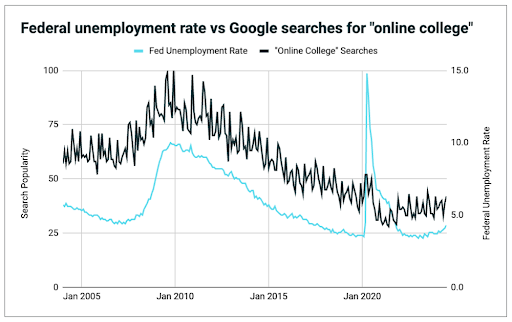
Online college vs. Online degree
The data suggests that people who use the specific phrase “online college” when searching for higher education may be recently unemployed. Digging deeper, this non-traditional student demographic is older and may not value the traditional, on-campus college experience.
This hidden insight unlocks key information that online ed brands can use to deeply connect with one of their most qualified consumer segments. Furthermore, you might be able to predict increased interest in online colleges by monitoring the unemployment rate to get ahead of the trend.
Going even deeper, if we map the search popularity of a similar phrase, “online degree,” against the unemployment rate, there’s a much weaker correlation. In fact, consumer interest in “online degrees” was increasing while the unemployment rate was declining from 2015 to 2020.

It appears that learners researching “online degrees” have a different goal. Perhaps they are gainfully employed but need a specific degree to advance their careers.
Consumer data analysis provides online schools with granular, specific, and actionable insights that can infuse campaigns, messaging, surveys, and related efforts. That’s one powerful way to build better connections throughout the customer journey.
Consumer search data reveals brand strength
Search data can also highlight whether your brand is top of mind for in-market consumers as they progress along the customer journey. Among the online education searches we analyzed, 68.4 million (about one-third) mentioned a brand. The rest did not.
NOTE: To be considered for our branded search analysis below, at least 75% of a university’s students must be enrolled in online learning programs. We excluded schools like Arizona State University (ASU) because only 43% of its students are enrolled in online programs.

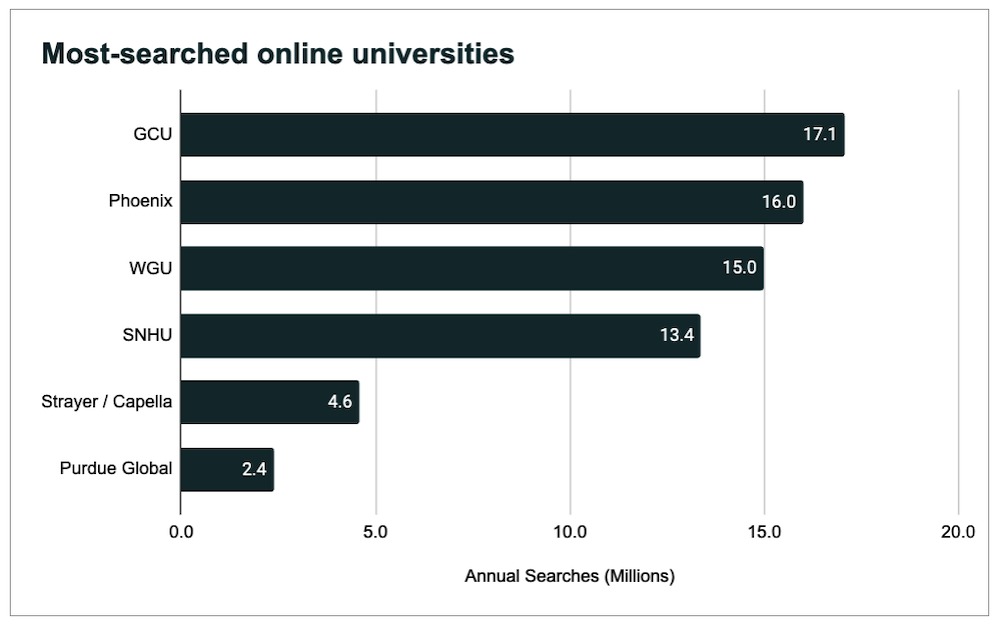
The top four online colleges are evenly matched in terms of brand awareness, with Grand Canyon University (GCU) holding the top position at about 17 million total branded searches in the last 12 months. Based on its strong awareness, you might expect GCU to also have the most enrolled students.
However, Western Governors University (WGU), despite placing third, actually has significantly more online students than its competitors.

How does WGU drive more enrollments with less brand awareness? By understanding, engaging, and connecting with potential students early in the customer journey.
The WGU website engages prospective students by creating content that meets their specific needs as they search for information like, “rn to bsn degree programs.”
WGU does this more often and more effectively, earning a bigger share of non-branded organic search than its competitors. This engagement gives the brand millions of invaluable touchpoints to guide enrollment decisions.
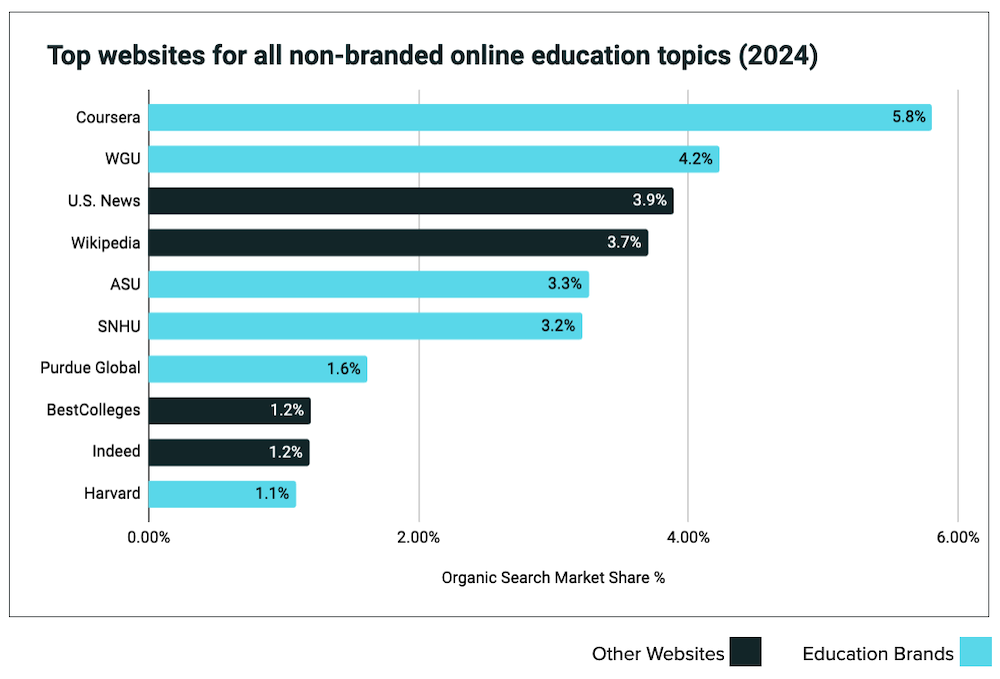
139 Million opportunities to reach new students
Search data gives marketers hundreds of millions of data points about what their audiences want. We can use this data to build performance marketing models, enhance messaging, and even guide business investments.
Terakeet analyzed nearly 207 million annual searches to learn how prospective students think while researching online education options.
Nearly 139 million of those searches (two-thirds) didn’t mention a brand, giving online colleges the opportunity to build relationships with in-market customers and guide their decisions.
We analyzed the data and created six customer intent segments that each reflected similar needs:
- Courses: Low-commitment training
- Certifications: Proof of expertise
- Programs: Comprehensive, high-commitment learning
- Degrees: A formal education with credentials
- Online Learning: Flexible learning to fit your needs
- Fields of Study: Interest in a specific career
The Fields of Study segment was the most popular, containing 95 million annual searches and representing 41% of all online education searches. The next most popular intent segments were degrees (21.6%) and online learning options (18.1%).
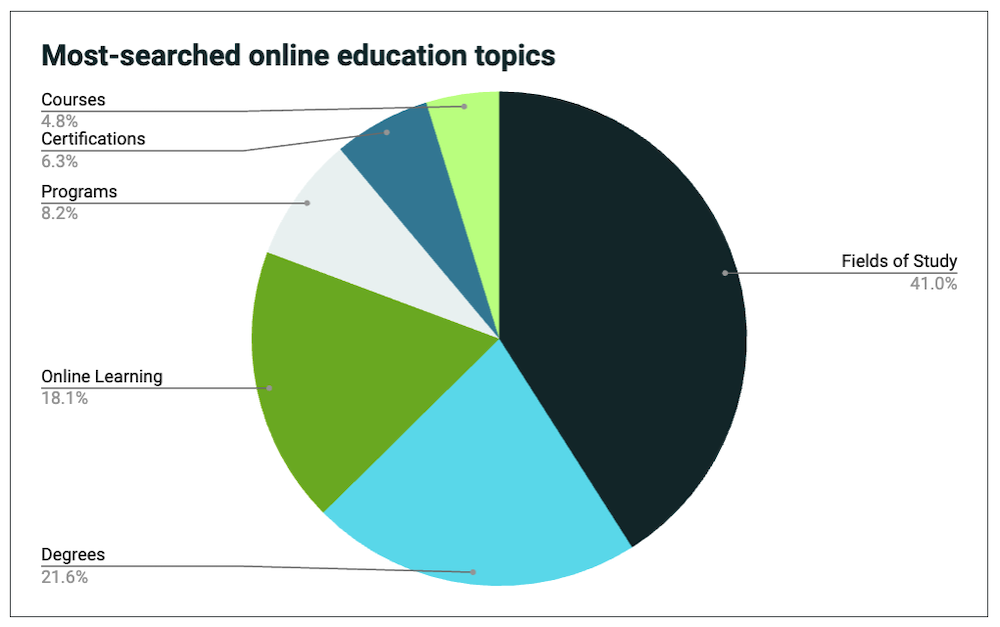
Education brands hold six of the top 10 positions when ranked by organic search market share, and they account for 62% of the total share of clicks.
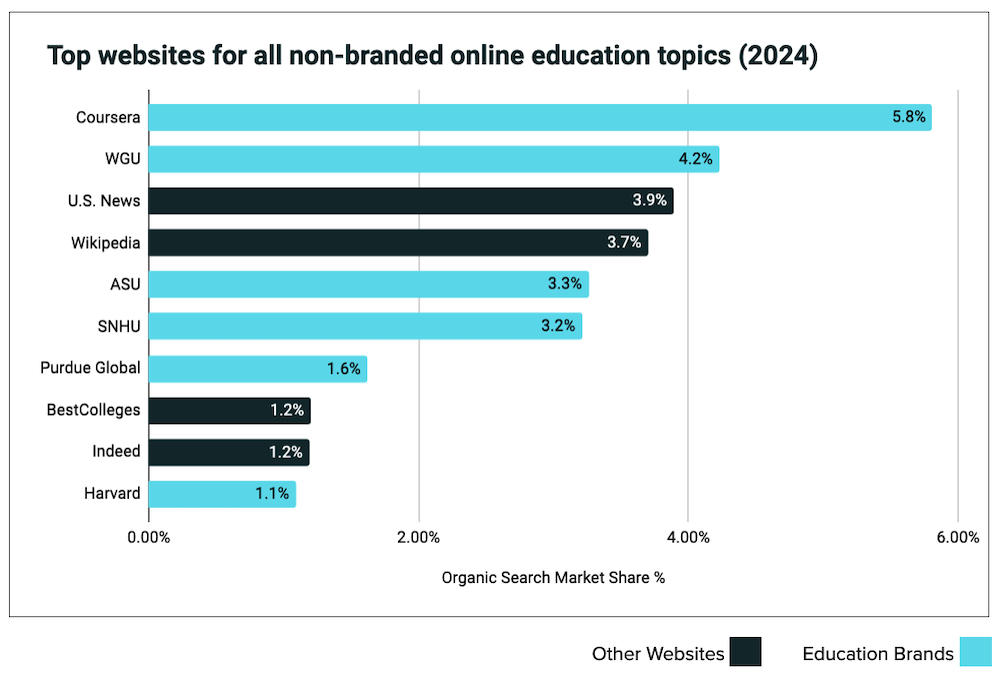
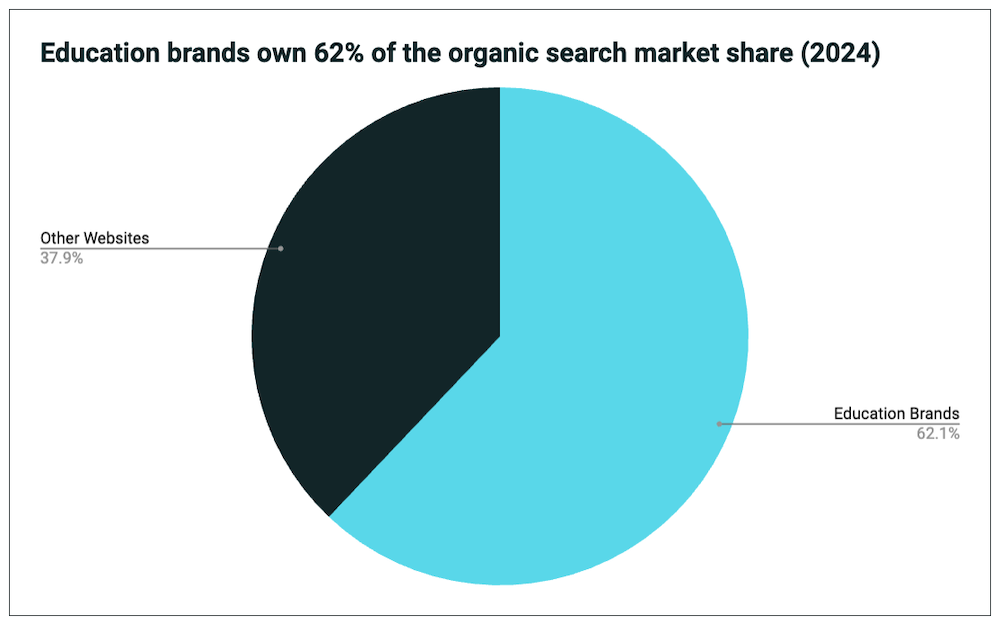
Health careers drive the most search interest from students
When analyzing search data across the Fields of Study segment, we focused on the six most popular subject areas offered by online colleges.
Consider this a snapshot of what students are seeking rather than an all-inclusive list of every topic available:
- Health and behavior
- Computer science
- Business
- Education
- Finance
- Criminal justice
The “health and behavior” category dominates the Fields of Study segment with 46% of the search interest and 45.7 million annual searches. Students in this category want to learn about nursing, psychology, medical billing, social work, and public health.
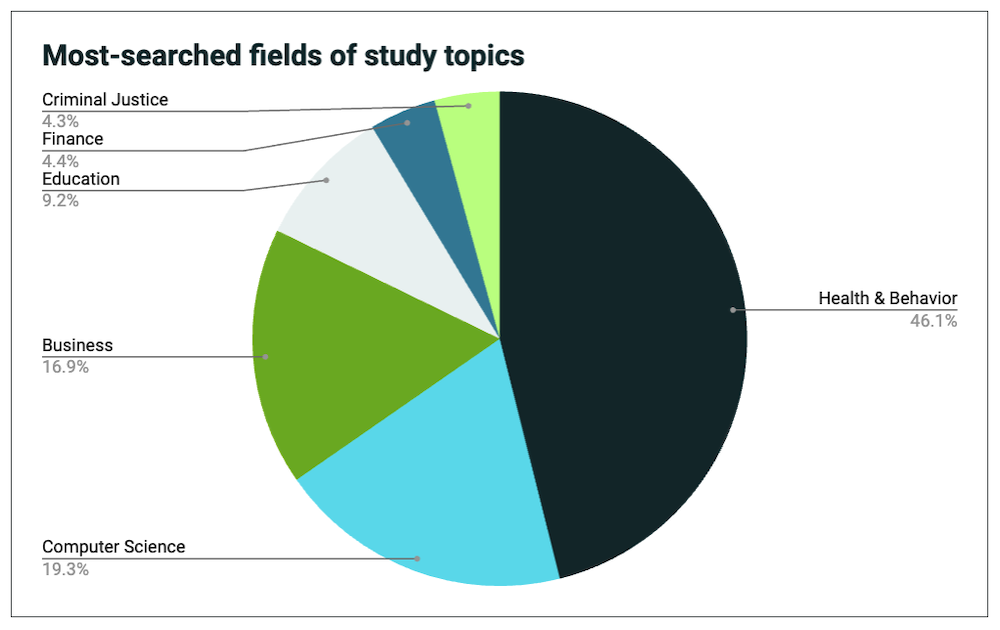
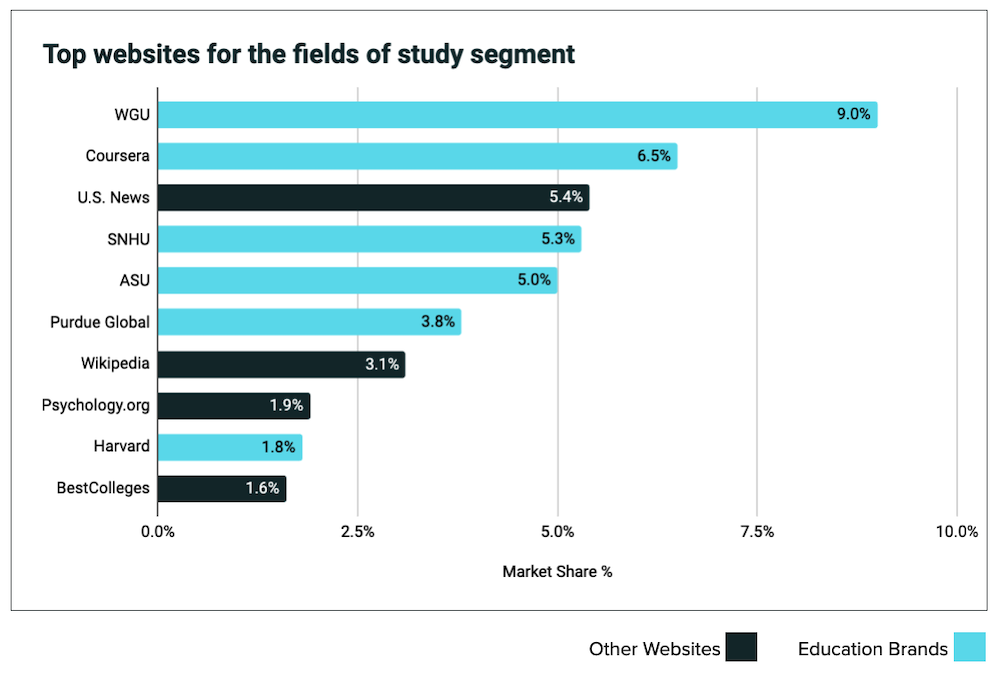
Western Governors University (WGU) holds a commanding lead by publishing content that engages students who are researching various fields. Overall, education brands control 69% of the organic search market share in this segment.
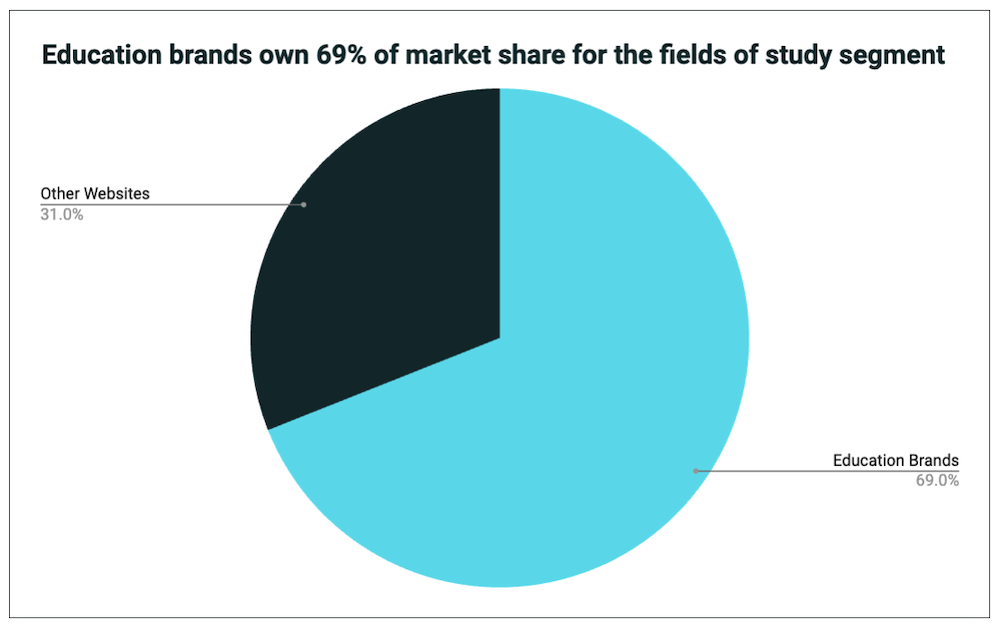
59% of online students want graduate degrees
Consumer intent data from the Types of Degrees segment shows us that the majority of online education seekers want advanced degrees, with 46% seeking a master’s degree.
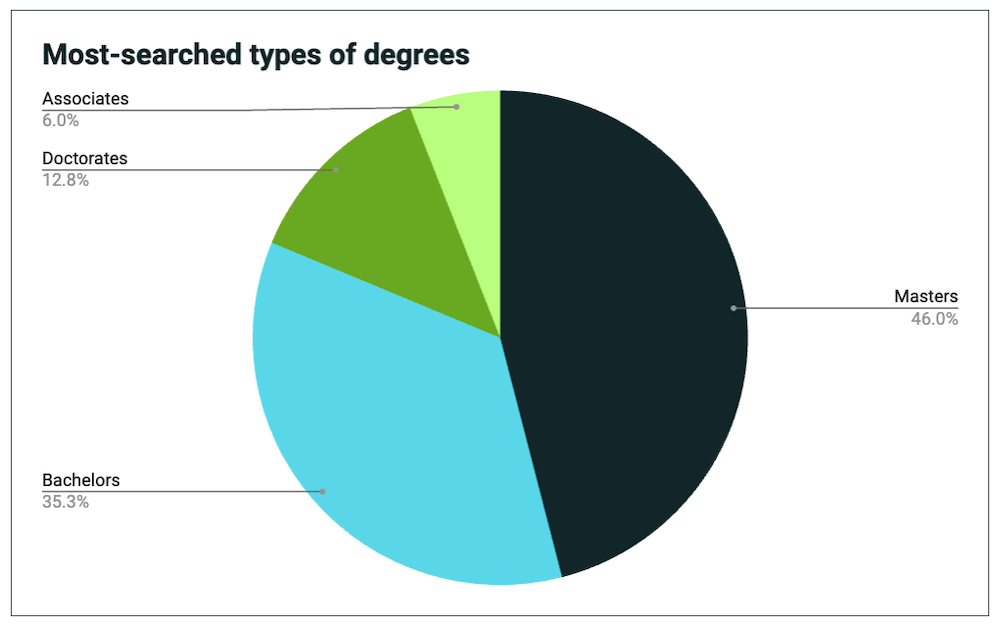
Wikipedia does particularly well in this customer intent segment because it specializes in defining concepts like:
- Associate degree
- Bachelor of Science
- Master’s degree
- M.S. degree
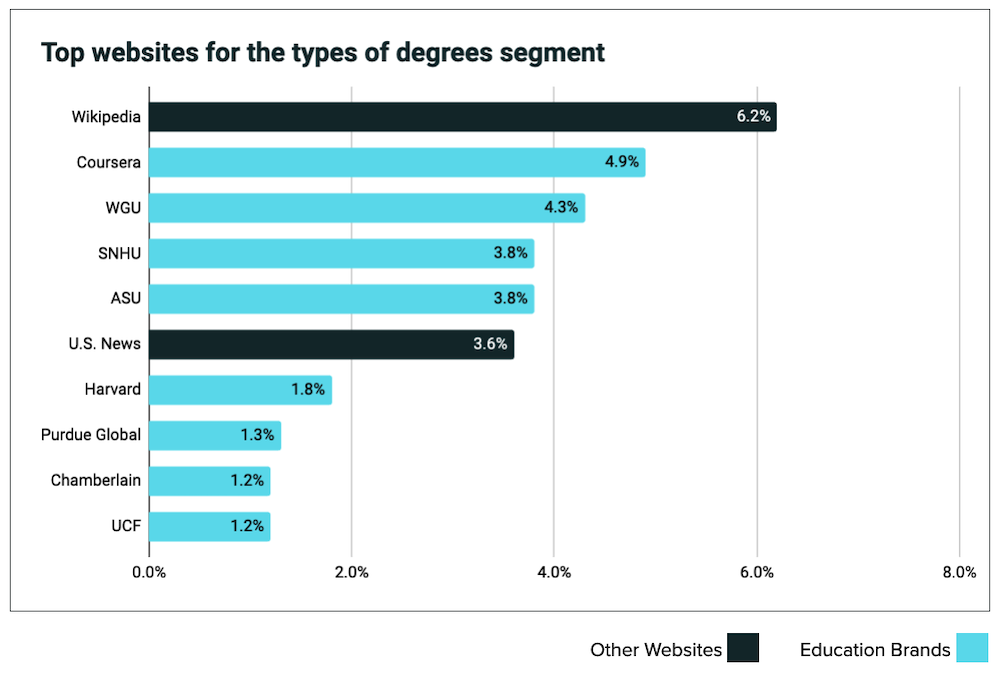
Traditional colleges are gaining online learning market share
Traditional universities are expanding their education programs to reach new students who don’t want to live on campus.
Arizona State University (ASU) currently has the most organic search market share for students who used the word “online” when searching for education. Penn State also moved into the top 10, displacing GCU, Strayer, and University of Phoenix.

Empowering adults who have lost their jobs
Online students don’t look like traditional college students:
As we mentioned in the first email in this series, there’s a strong correlation between the federal unemployment rate and Google searches for “online college.” So it’s likely that people who have recently lost their jobs are looking for a new career and considering online education. They just haven’t chosen a specific path yet.
Education brands that reach potential students when they’re most receptive will have a greater opportunity to build trust, guide decisions, and drive enrollment later in the journey. The best time to reach them is when they’re seeking answers in Google Search.
Although WGU dominates organic market share across most customer intent segments, ASU performed best in the online learning segment.
A look at ASU’s owned assets
ASU’s online learning landing page performs well in search because it meets users’ needs by including relevant phrases like “online learning,” “online college,” “online university,” and “online programs.”
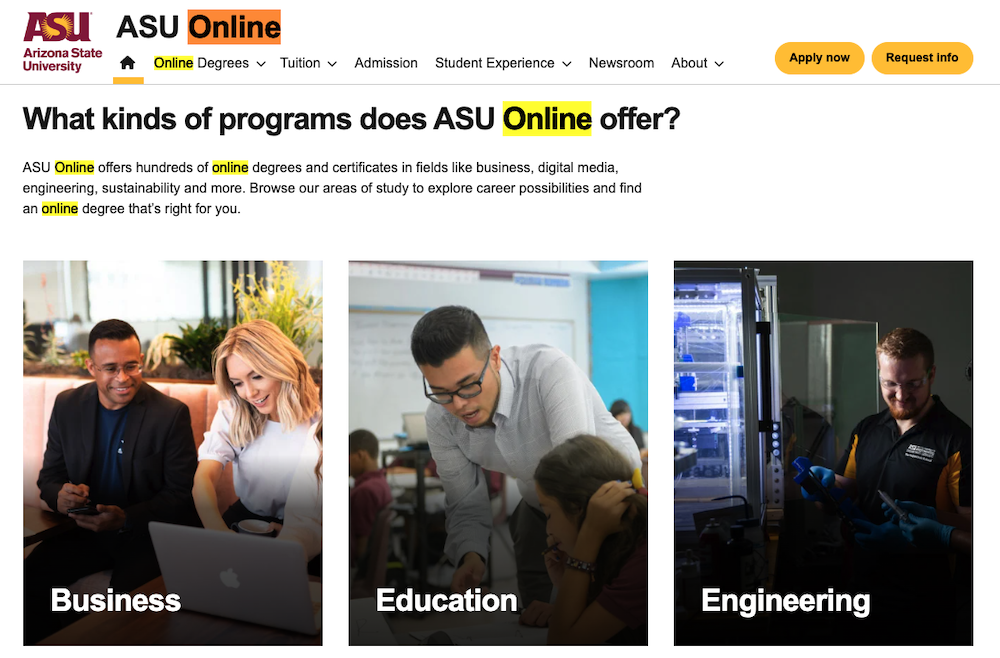
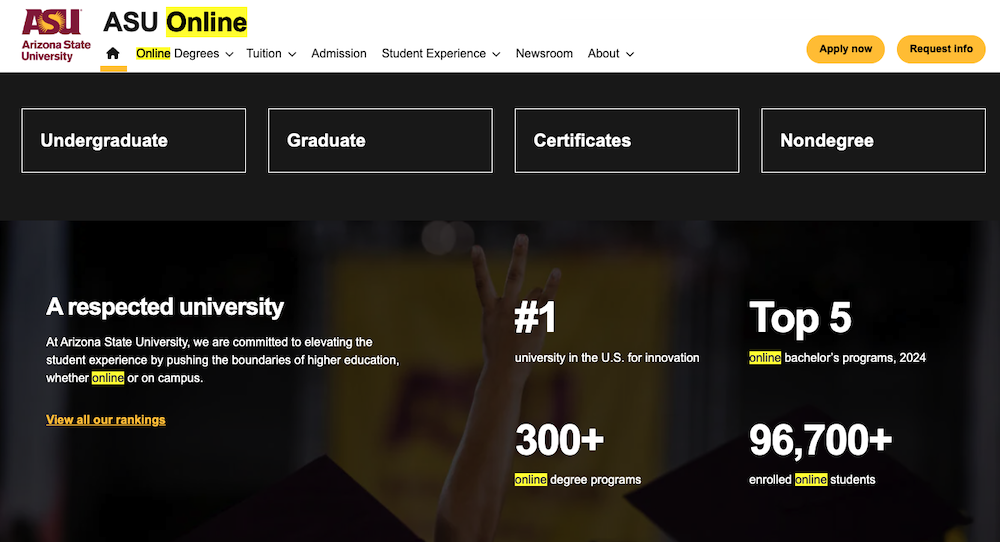
The page also shows visitors that ASU understands their concerns and desired outcomes and offers helpful content about going back to college as an adult.
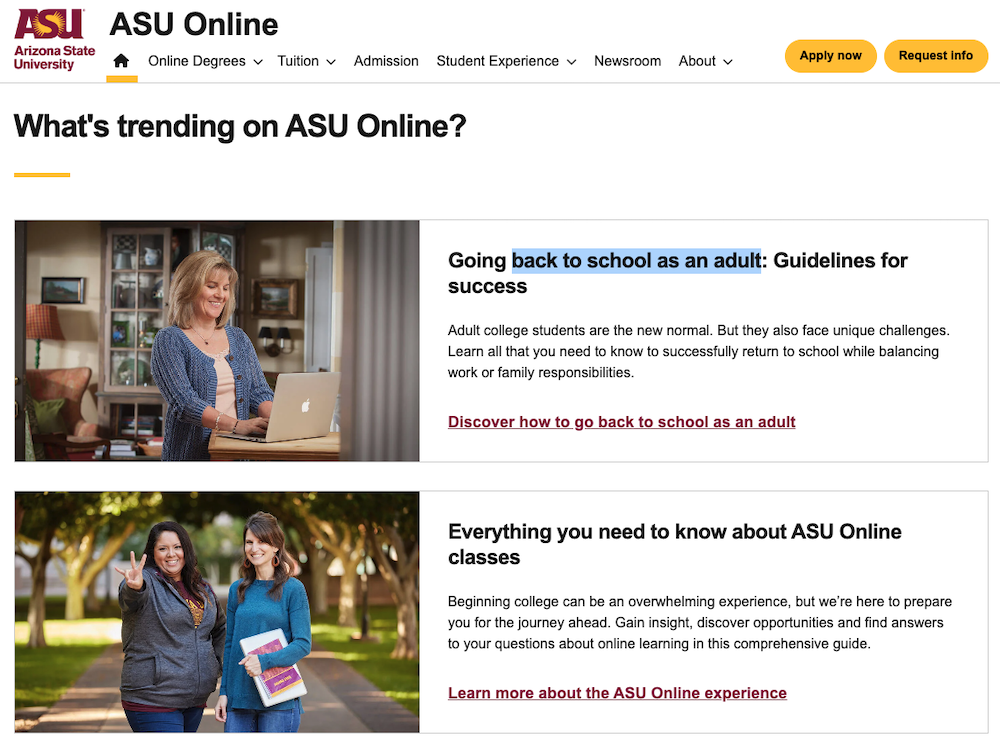
ASU’s landing page is an excellent example of how online education brands can meet potential students early in their journey and become trusted guides as potential students make important decisions for their future.
Enabling employees to advance their careers
Degree seekers are another important customer intent segment that online education brands should connect with. This group is interested in specific types of degrees, and the largest cohort is seeking a master’s degree. The master’s degree cohort contains 23 million annual searches, representing 46% of all degree searches.
A recent study showed that 74% of online graduate students work full-time.
Google Trends data reveals a slight increase in searches for “online degrees” when the job market heats up, validating that these individuals likely want to advance their careers while working.
A look at WGU’s owned assets
WGU meets the needs of this segment by publishing broad, navigational content about online degrees to help potential students narrow their interests.
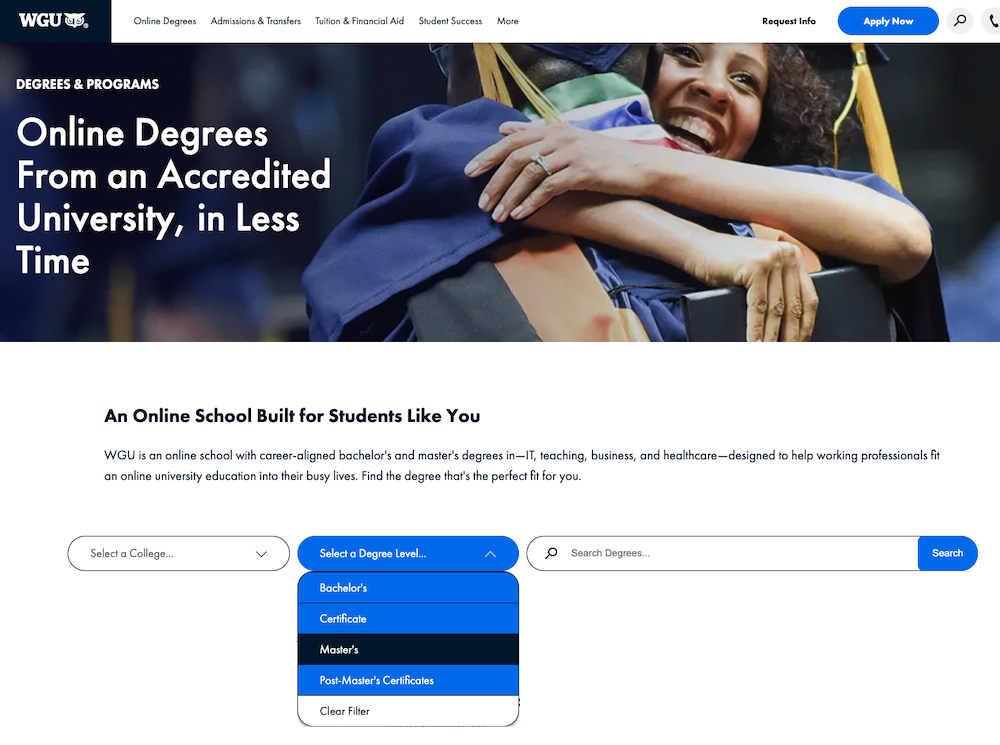
When visitors drill down into the master’s degree section, they’ll discover content about what to expect from a master’s program, including how an online learning experience differs from an on-campus experience.
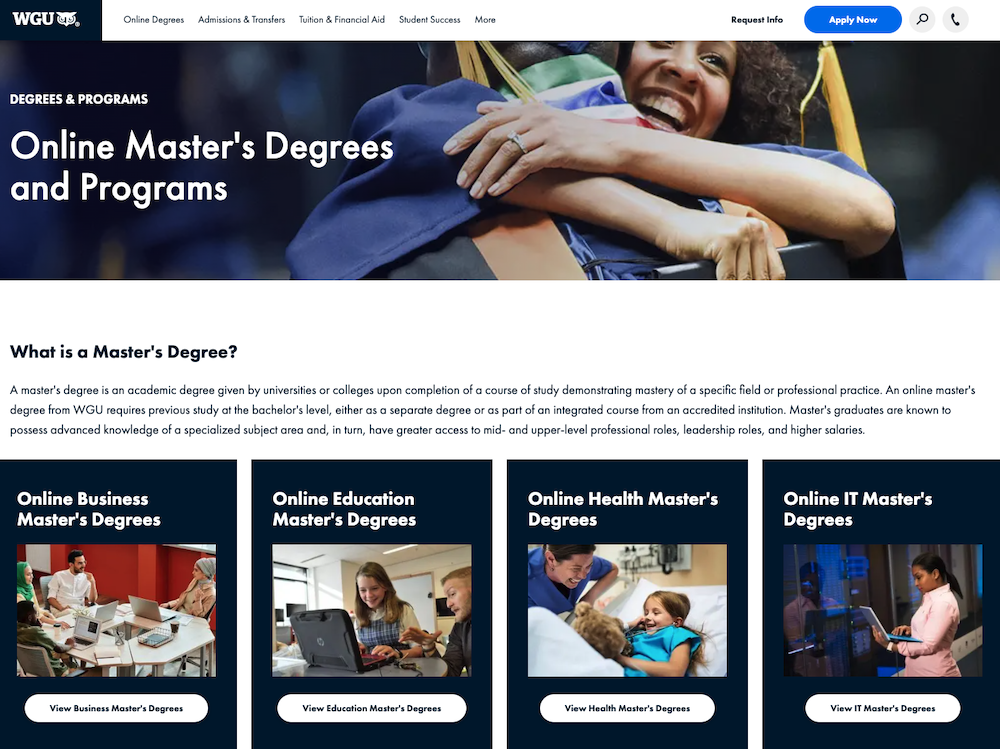
Guiding students toward a career
While some potential students need help choosing a career path, the Fields of Study customer intent segment has a head start. This group knows what it wants and is slightly closer to a decision.
WGU offers an extensive library of content that dives deep into career pathways. It informs education seekers about what to expect while earning a degree as well as the jobs and earnings potential each degree unlocks.
Similar to its online degrees landing page, WGU’s online nursing landing page offers visitors several sorting options to drill down into the level of education or certification they want, as well as content about the benefits of entering a healthcare career.
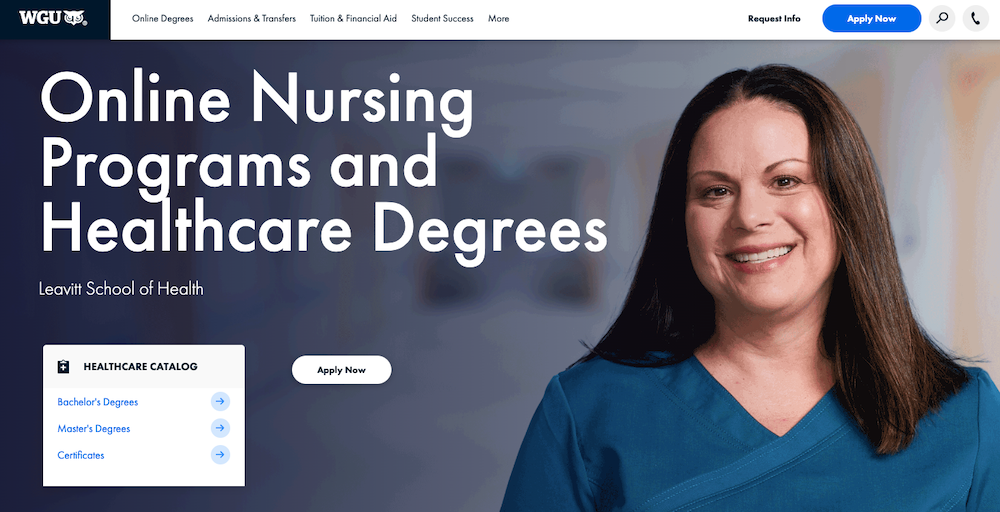
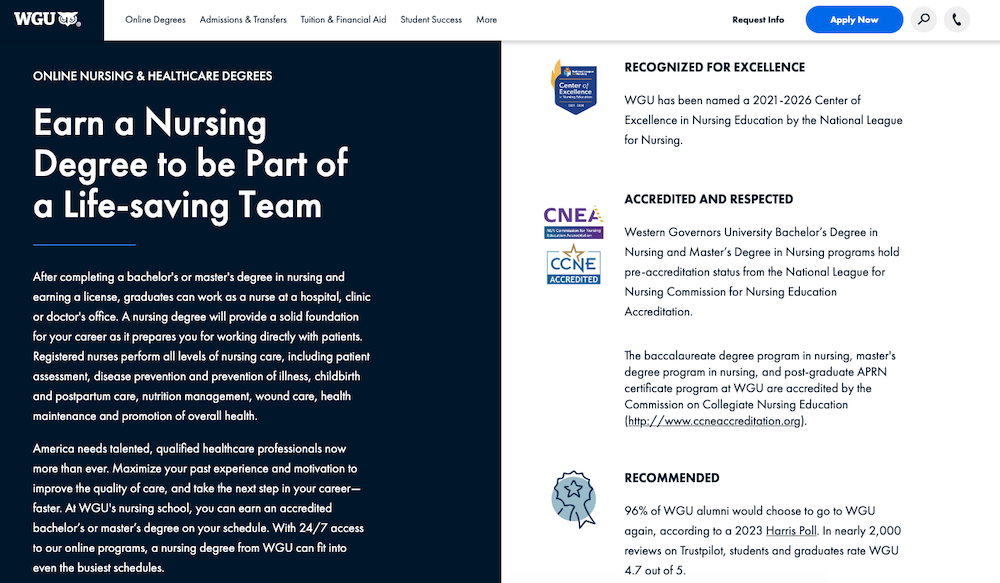
When users explore the nursing bachelor’s degree section, they’ll discover a catalog of degrees to choose from with descriptions in easy-to-navigate card format.
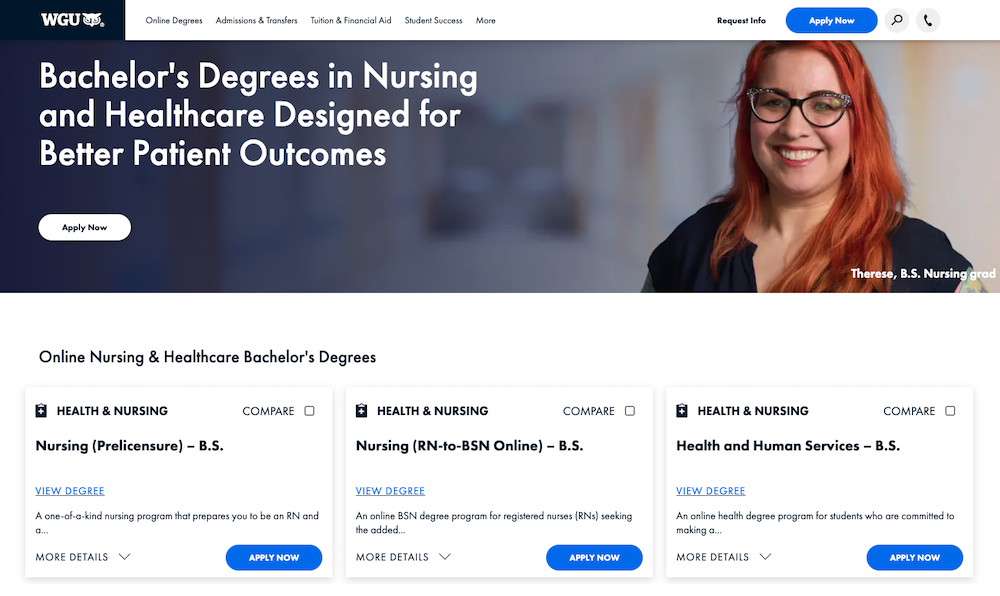
To help prospective students choose a specific degree, WGU publishes highly detailed guides like their RN to BSN bachelor’s degree page below.
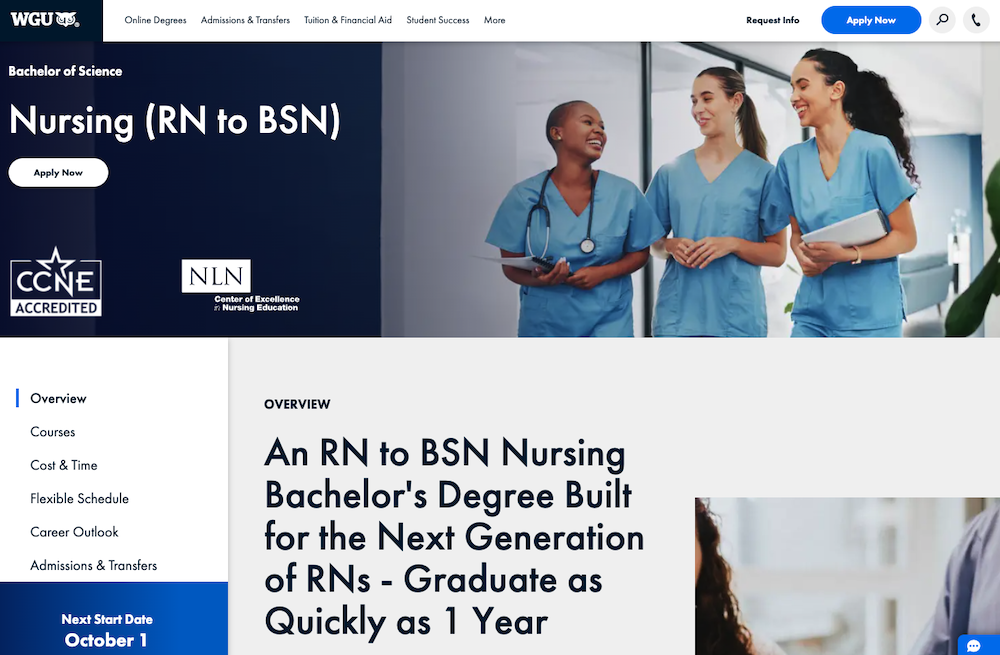
This page provides a program overview, explains each course in user-friendly dropdown menus, and offers a cost calculator to estimate fees and tuition.
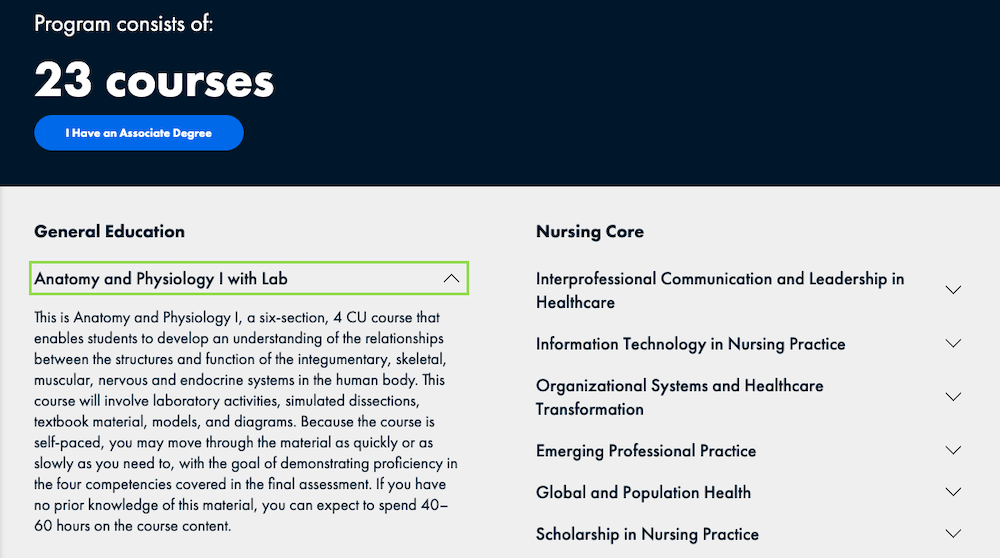
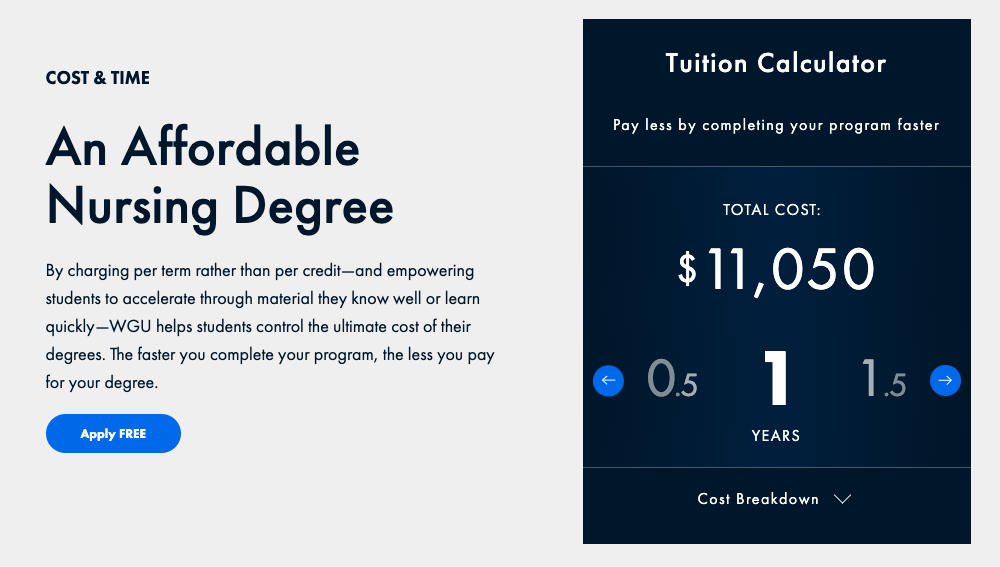
Finally, WGU shows visitors the real value of an online degree by publishing a library of content about specific careers their degrees enable.
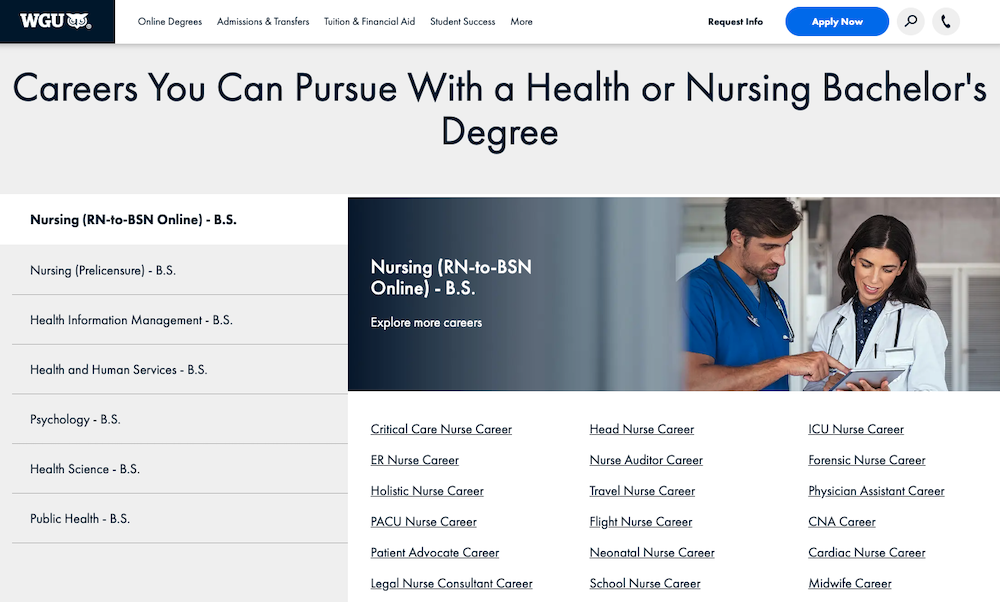
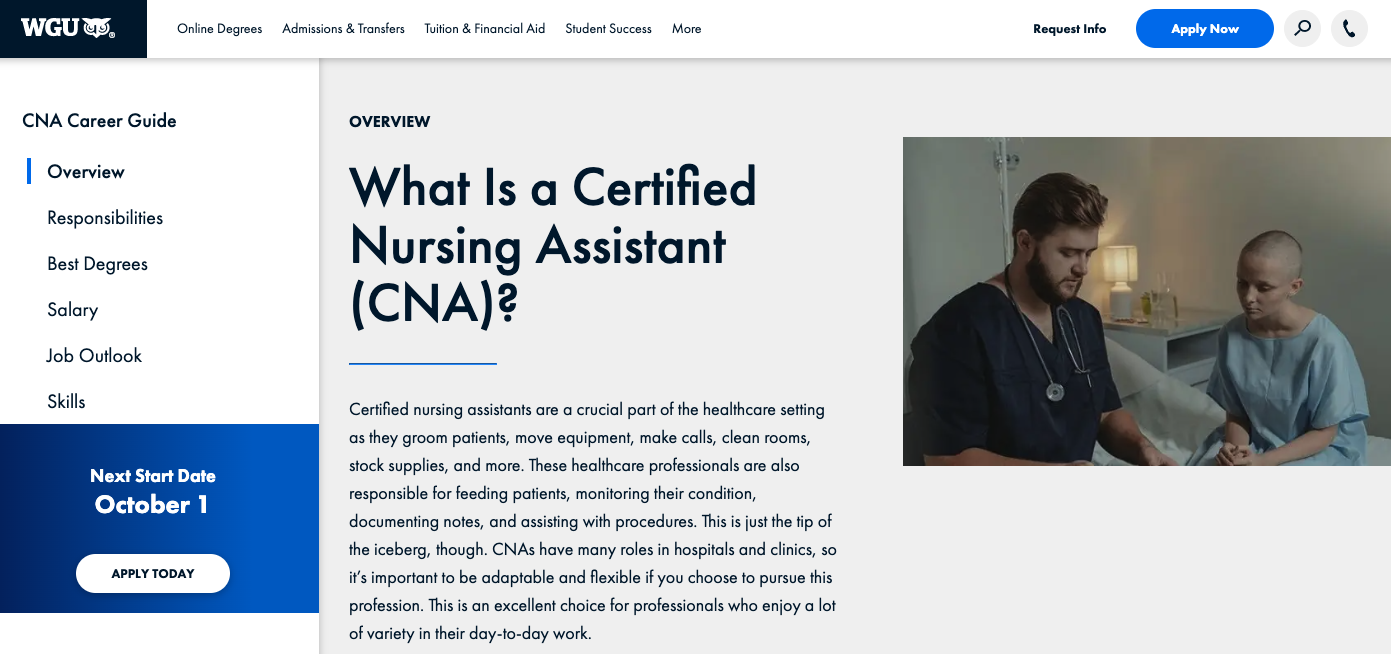
This content answers the most important questions about potential students’ minds, including:
- What is a certified nursing assistant (CNA)?
- What does a CNA do?
- What education does a CNA need?
- What certifications does a CNA need?
- What are the best degrees to become a CNA?
Not only does this content satisfy real user needs but it also performs exceptionally well in search.
According to Semrush data, WGU’s career section earns an estimated 3.4 million annual visits, and it wins consumer attention by showing up in Google’s featured snippets and AI Overviews.
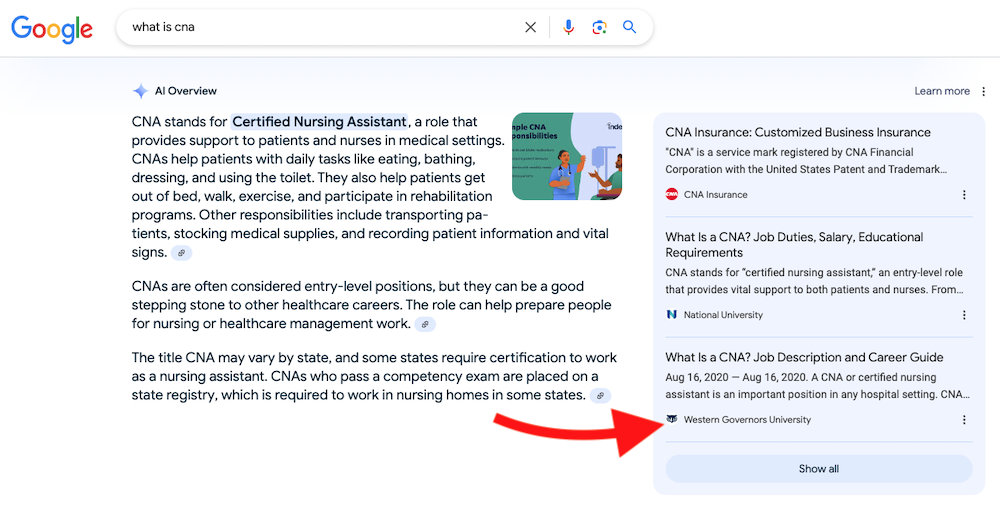
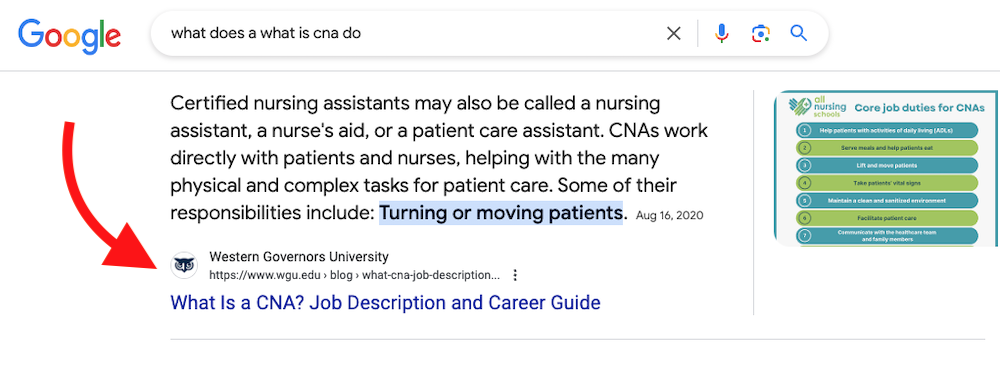
WGU’s insight-driven content strategy meets students when they’re most receptive throughout the customer journey. It creates brand awareness, builds trust, and drives valuable enrollments to help people advance their careers and live better lives.
That’s the power of reception marketing. By understanding consumers’ needs, brands can meet them when they’re actively seeking answers.




